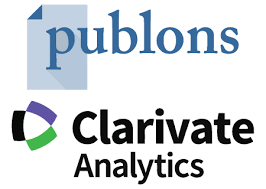Financial governance of cryptocurrencies in Africa
DOI:
https://doi.org/10.59051/joaf.v14i1.596Keywords:
Fintechs - Financial governance - Cryptocurrencies - Game theory - AfricaAbstract
Purpose : Show to what extent the tax can constitute an instrument of control of cryptocurrencies available to monetary and financial authorities.
Methodology : Based on a theoretical model that takes up the functioning of an implicit contract (Milgrom, 1997), the methodology of this article consisted in resolving a governance game between financial authorities and cryptocurrency platforms.
Results : A monetary levy at the time of the conversion of cryptocurrencies into legal currencies constitutes a means for central banks to effectively control cryptocurrencies, in particular due to the refusal of cryptocurrency platforms to share information relating to transactions carried out. In addition, coordination of public, financial and banking authorities is essential to reduce illicit transactions and secure exchanges.
Originality : Its lies in the methodological approach adopted. Indeed, the use of theoretical modeling of the governance game is a new approach that has so far been little adopted in work relating to the analysis of the financial governance of cryptocurrencies.
Downloads
References
Aboudrar A., 2012, « Gouvernance financière au Maroc : Etat des lieux et perspectives », Institut Supérieur de l’Administration, Programme « Agora de la gouvernance ».
Adrian, Tobias, and Rhoda Weeks-Brown. 2021. “Crypto Assets as National Currency? A Step Too Far.” IMFBlog, International Monetary Fund, July 26. https:// blogs .imf .org/ 2021/07/ 26/ crypto assets-as-national-currency-a-step-too-far.
Ali, R., Barrdear, J., Clews, R., & Southgate, J., 2014a. The economics of digital currencies. Bank of England Quarterly Bulletin, 54(3), 276-286.
Ali, R., Barrdear, J., Clews, R., & Southgate, J., 2014b. Innovations in payment technologies and the emergence of digital currencies. Bank of England Quarterly Bulletin, 54(3), 262-275.
Amstad, M. 2019. « Regulating Fintech : Objectives, Principles and Practices ».
Andolfatto D. 2019, “Assessing the Impact of Central Bank Digital Currency on Private Banks,” Working Papers 2018-25, Federal Reserve Bank of St. Louis.
Auer, R. et Claessens, S. 2018. « Price discovery and arbitrage in the market for bitcoin », BIS Working Papers, à paraître.
Autorité des marchés financiers, 2020, « Qu’est-ce qu’une cryptomonnaie ? », https://www.amf-france.org/fr/quest-ce-quune-cryptomonnaie?1606999115.
Banque des Règlements Internationaux 2018, Rapport économique annuel, juin.
Banque des Règlements Internationaux, 2018, « Implications des évolutions de la technologie financière pour les banques et les autorités de contrôle bancaire ».
Biais, B., Bisière, C., Bouvard, M. and Casamatta, C. 2018. The blockchain folk theorem, Working paper TSE-817.
Blundell-Wignall, A. 2014. « The Bitcoin Question : Currency versus Trust-less Transfer Technology », documents de travail de l’OCDE sur les finances, les assurances et les pensions privées, n°37.
Cary, N. 2016. « Bringing Money into the Digital Age», blog invité pour l’OCDE, juin 2016.
Chainalysis, 2021, « The 2021 Geography of Cryptocurrency Report : Analysis of Geographic Trends in Cryptocurrency Adoption and Usage, October 2021.
Cong, L. W. and He, Z. 2018. Blockchain disruption and smart contracts, SSRN Elec. Journal.
Conseil de stabilité financière 2018, Crypto-assets: report to the G20 on the work of the FSB and standard-setting bodies.
Consumers international, 2017, « L’avenir des services bancaires : Une exploration de la FinTech et des intérêts du consommateur en 2017 », http://www.consumersinternational.org/.
Corriveau, L. 2004. « Gouvernance, légitimité et théorie des jeux », Revue Gouvernance, 1(1). https://doi.org/10.7202/1039195ar.
Dacheux E. et Goujon D. 2016. “Pas de transition sans une nouvelle approche de la monnaie délibérée”: The conversation
Digital Currency. 2017. « What the Heck Is It? », RBC Banque Royale, février 2017.
Fegatelli P. 2019, “Central bank digital currencies: the case of universal central bank reserves”, Banque Centrale du Luxembourg, Working Paper, N°130.
Genais A. et Landau J-P. 2018. « Les crypto-monnaies ». Rapport au Ministre de l’Économie et des Finances, Juillet 2018.
Hayek, F. 1976. Denationalisation of Money: An Analysis of the Theory and Practice of Concurrent Currencies. London: The Institute of Economic Affairs (Hobart Paper Special 70).
He, D., Leckow, R., Haksar, V., Mancini-Griffoli, T., Jenkinson, N., Kashima, M., ...&Tourpe, H. 2017. Fintech and Financial Services: Initial Considerations. IMF Staff Discussion Note: Fintech and Financial Services: Initial Considerations, 17(05). https://www.imf.org/en/Publications/Staff-Discussion Notes/Issues/2017/06/16/Fintech-and-Financial-Services-Initial-Considerations-44985
Hileman, G. and Rauchs, M. 2017. Global cryptocurrency benchmarking study, White paper .
Kindleberger C. 1978, Manias, Panic, and crashes: A history of financial crisis. Basic Books. Traduction française (1993) : Histoire mondiale de la spéculation financière. Editions PAU.
King M. 1999, « Challenges for monetary policy : new and old », speech delivered at a symposium sponsored by the federal reserve bank of Kansa city, http://www.imf.org/external/pubs/ft/fandd/2018/06/central-bank-monetary-policy-and-cryptocurrencies/he.htm
Mandelbrot B. B., Hudson R.L. 2004, Une approche fractale des marchés : risquer perdre et gagner, Paris, Odile Jacob.
Milgrom, P. et Roberts J. 1997. « Economics, Organisation and Management», Englewood Cliffs, Prentice Hall, 1992. Traduction française, Économie, organisation et management, Paris : De Boeck Université, 1997.
Minsky H.P. 1986, Stabilizing the Unstable Economy. New Haven, CT, Yale University Press, and new edition : (2008), Stabilizing an unstable economy, New York, Mac Graw Hill.
Philip B. 2017. « Comment la technologie de la chaîne de blocs pourrait changer nos vies», Parlement européen, Service de recherche, février 2017.
Pignel M. 2019, « La technologie blockchain : Une opportunité pour l’économie sociale ?, European think and do tank, NOTES D’ANALYSE │ JUIN 19, Économie sociale.
Rey, H. 2015. Dilemma not Trilemma: The Global Financial Cycle and Monetary Policy Independence. NBER Working Papers, (21162).
Statista. 2021. “How Common Is Crypto?” by Buchholz Katherine. https:// www .statista .com/ chart/ 18345/ crypto -currency –adoption.
Tichit A., Lafourcade P., Mazenod V. (2017), « Les monnaies virtuelles décentralisées sont-elles des outils d’avenir ? », Études et Documents, n° 4, CERDI. http://cerdi.org/production/show/id/1859/type_production_id/1.
Tobias A., Dong He et Aditya N. 2021. « Cryptoactifs: pour une réglementation mondiale complète, cohérente et coordonnée», FMI, blog, 9 décembre 2021.
Vasselin F., 2020 « Bitcoin et souveraineté monétaire ». Publié dans laviedesidees.fr, le 18 septembre 2020.
Zimmerman P. 2020, “ Blockchain structure and cryptocurrency prices ”, Bank of England Staff Working Paper No. 855.
Downloads
Published
How to Cite
Issue
Section
License
Copyright (c) 2023 Marius FOTSO KAMGA, ADECHI ADECHI

This work is licensed under a Creative Commons Attribution-NonCommercial-NoDerivatives 4.0 International License.
Authors who publish with this journal agree to the following terms:
- Authors retain copyright and grant the journal right of first publication with the work simultaneously licensed under a Creative Commons Attribution License that allows others to share the work with an acknowledgement of the work's authorship and initial publication in this journal.
- Authors are able to enter into separate, additional contractual arrangements for the non-exclusive distribution of the journal's published version of the work (e.g., post it to an institutional repository or publish it in a book), with an acknowledgement of its initial publication in this journal.
- Authors are permitted and encouraged to post their work online (e.g., in institutional repositories or on their website) prior to and during the submission process, as it can lead to productive exchanges, as well as earlier and greater citation of published work (See The Effect of Open Access).






















